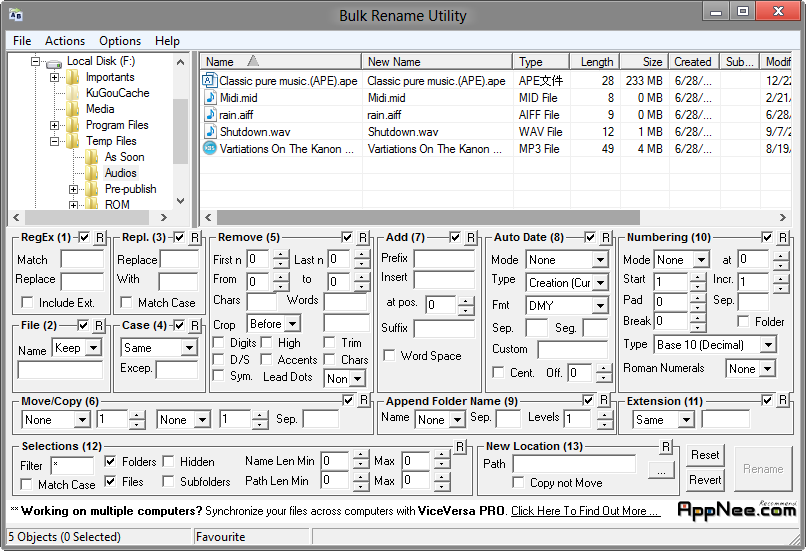
The user does not have the required permission ( UnauthorizedAccessException). The user lacks necessary permissions to view the path ( SecurityException). The path exceeds the system-defined maximum length ( PathTooLongException).Ī file or directory name in the path contains a colon (:) or is in an invalid format ( NotSupportedException). There is an existing file or directory with the name specified in newName ( IOException). The source file is not valid or does not exist ( FileNotFoundException). NewName is Nothing or an empty string ( ArgumentNullException). The path is not valid because it is Nothing ( ArgumentNullException). NewName contains path information ( ArgumentException). The path is not valid for one of the following reasons: it is a zero-length string, it contains only white space, it contains invalid characters, or it is a device path (starts with \\.\) ( ArgumentException). The following conditions may cause an exception: In the code snippet picker, the snippet is located in File system - Processing Drives, Folders, and Files. This code example is also available as an IntelliSense code snippet. ' Change "c:\test.txt" to the path and filename for the file that This example renames the file named Test.txt to SecondTest.txt. In that case the topic you'd be looking for documentation about would be regex replacements, not bulk file renaming. Case in point, most bulk renaming would be done with regex replacements, which aren't even involved here. This method cannot be used to move a file use the MoveFile method to move and rename the file. Documentation for how to create the new name would be specific to whatever it is you want to do.

Use the RenameFile method of the My.Computer.FileSystem object to rename a file by supplying the current location, file name, and the new file name.


 0 kommentar(er)
0 kommentar(er)
